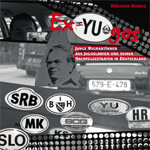Rüdiger Rossig | Journalist | Novinar
Freemasons For Peace
In the 1920s Briand and Stresemann dreamed of a United States of Europe | By Rüdiger Rossig
The First World War was over, the French and the Germans deeply divided. Aristide Briand and Gustav Stresemann worked for reconciliation.
Today’s European Union is not the first attempt to unite the European continent by peaceful means. Just after the First World War, there were efforts to create a unified Europe – and so to avoid a repeat of the tragedy of 1914-18. Their architects were Frenchman Aristide Briand and German Gustav Stresemann. Unfortunately, their success didn’t last.
Stresemann was born on the May 10, 1878, in Berlin. His father owned a small bar and beer bottling plant. He studied economics and joined the right-progressive National Liberal Party and was elected to the Reichstag in 1907. In the following years, his social-political demands brought him into increasing dispute with his parliamentary colleagues.
That was one of the reasons that Stresemann, following the end of the monarchy in 1918, founded his own German People’s Party. He became minister and in 1923, chancellor. France had just occupied the Ruhr. Stresemann needed a partner on the French side with whom he could negotiate. He found one in Aristide Briand.
Briand came from the western French port city of Nantes. Born in 1862, his parents owned a small cafe whose customers were mostly sailors and dock workers. After graduating from high school, Briand moved to Paris and began to study law and write for leftwing newspapers. As a lawyer, he gained a reputation for his brilliant speeches and power of conviction. He also defended poor clients, often for free.
In 1902, he entered parliament as a socialist. He held several ministerial jobs until, in 1915, he became the prime minister of a central-left government.
Under Briand’s leadership, France emerged victorious but at the price of terrible sacrifice – and yet the French head of government was among the first who then worked for a just peace. In 1922, he resigned from office in protest at the harsh conditions imposed on Germany by the Treaty of Versailles.
Three years later, he was back in government and negotiated, together with Stresemann, the Locarno Treaties, by which Germany, France and Belgium agreed not to seek to change their common borders through violence in the future. In 1926, both politicians were awarded the Nobel Peace Prize.
Politically, the left-wing Briand and the conservative Stresemann did not have much in common. But they were bound by the ideals of the Freemasons, having been members since their youth, of freedom, equality, fraternity, tolerance and humanity.
After the success of Locarno, Briand developed a concept for the “United States of Europe.” Stresemann was enthusiastic. But following his death on Oct. 3, 1929, Briand couldn’t find any more support in Germany. The Frenchman died three years after his German colleague. In this way, both politicians were spared from experiencing how their lives’ work would be destroyed by the Nazi regime just a few years later.
 English
English  Naški
Naški  Deutsch
Deutsch 
